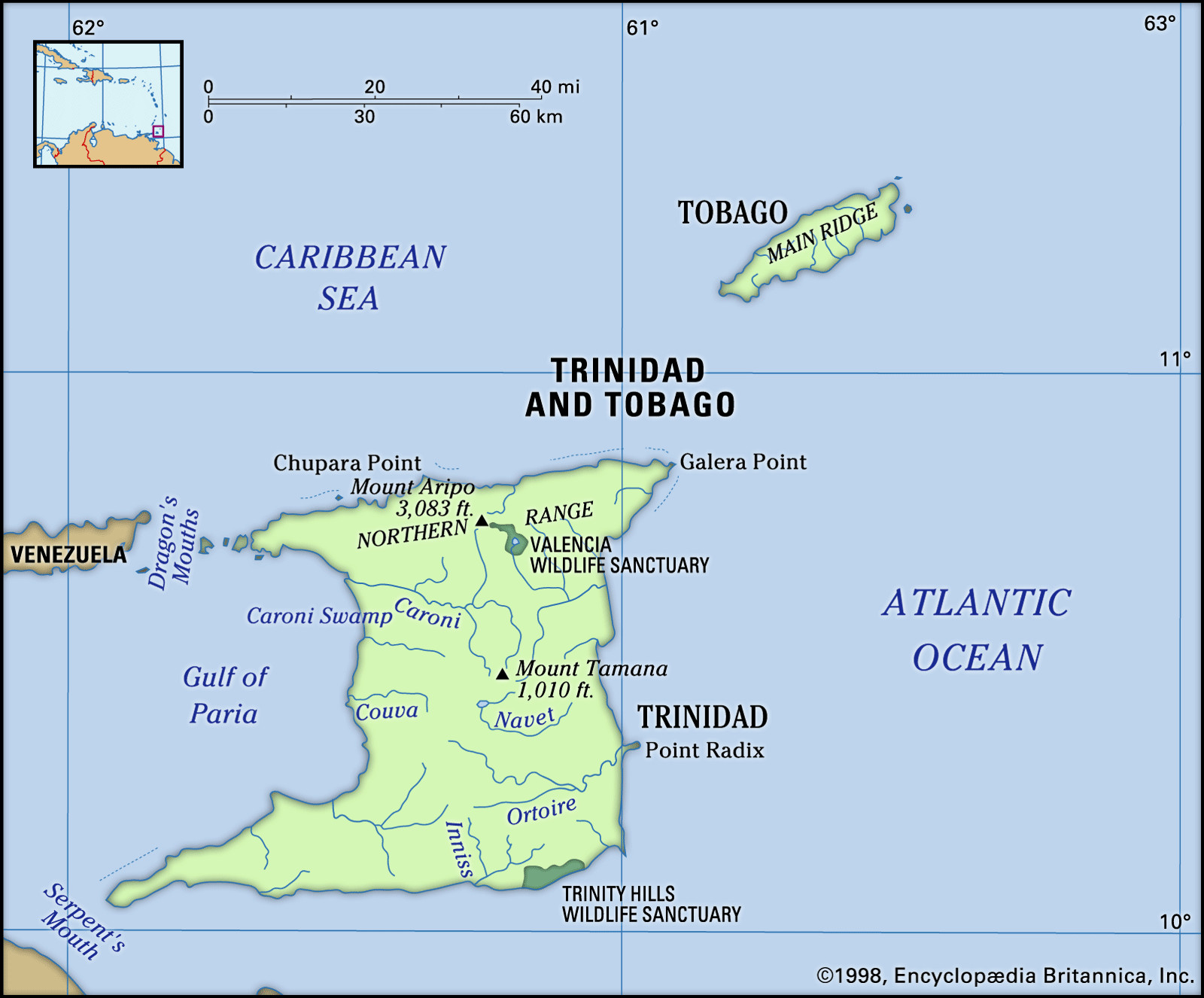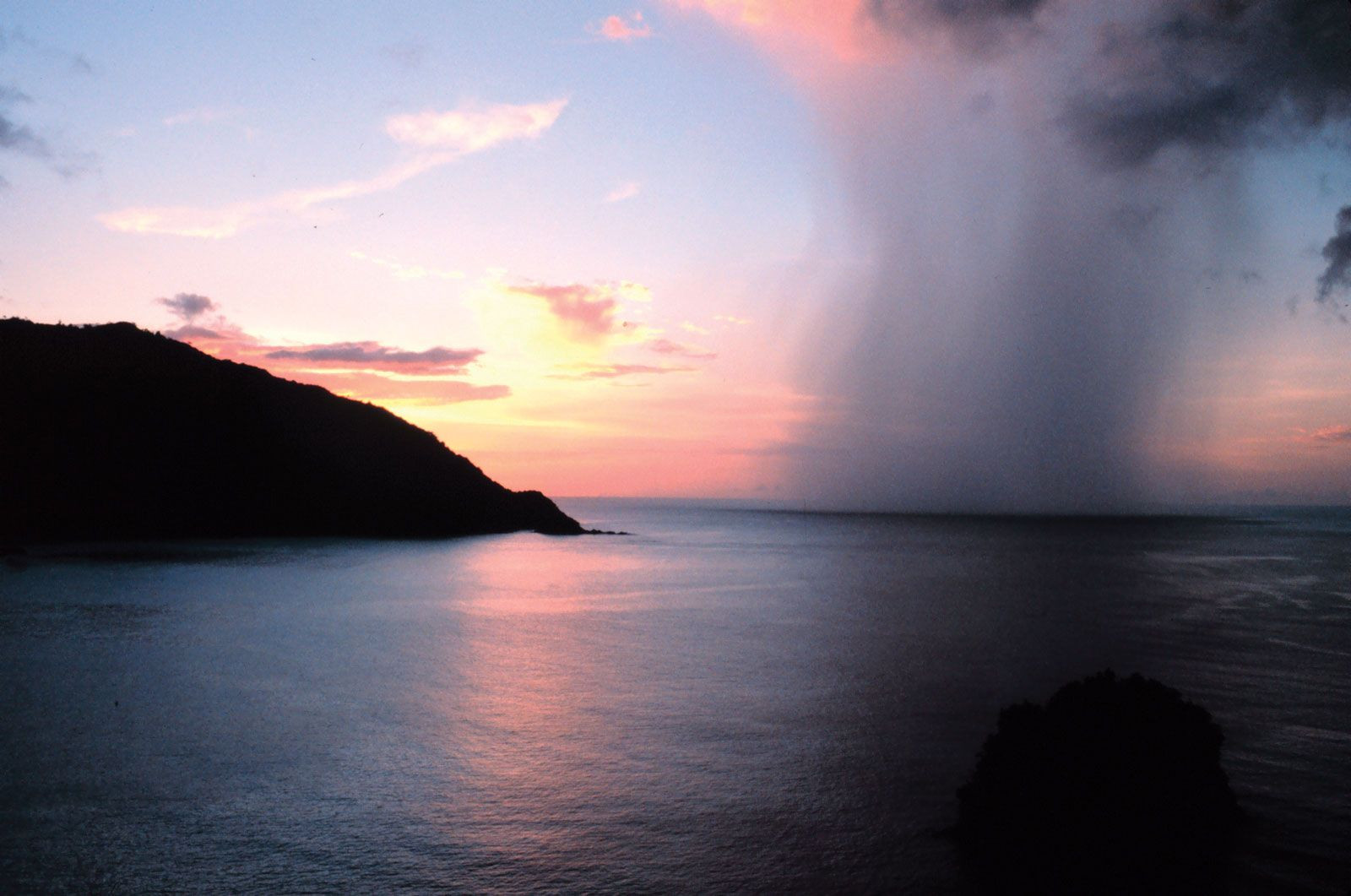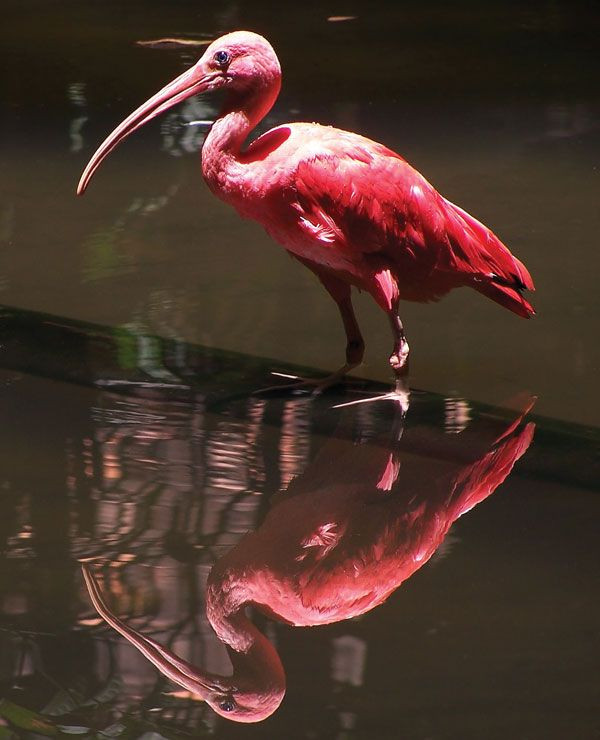Trinidad and Tobago, often simply referred to as Trinidad, is a twin-island country situated in the Caribbean, specifically within the West Indies. Geographically, these islands are positioned just off the northeastern coast of South America, making them the southernmost islands in the Caribbean chain. They lie a mere 11 kilometers (7 miles) from Venezuela. This unique location bridges the gap between the Caribbean archipelago and the South American continent, lending to the islands’ diverse ecology and cultural influences.
Trinidad: Geographic Location and Physical Landscape
 Physical features of Trinidad and Tobago
Physical features of Trinidad and Tobago
Location and Terrain of Trinidad and Tobago, highlighting its diverse physical features.
Trinidad’s landscape is remarkably varied, largely dictated by three prominent mountain ranges. The most striking is the Northern Range, a direct continuation of Venezuela’s Andes Mountains’ coastal extension. This range stretches east to west across the island, averaging around 1,500 feet (460 meters) in elevation and culminating at Mount Aripo (El Cerro del Aripo), the nation’s highest point at 3,084 feet (940 meters). The Northern Range is renowned for its numerous spectacular waterfalls, including Blue Basin Falls and Maracas Falls, both cascading from a height of 298 feet (91 meters). South of this range, foothills descend to the Northern Plain, adding another layer to the island’s topography.
Central Trinidad is defined by the Central Range, running from southwest to northeast. While less imposing than the Northern Range, it still features significant elevations, with Mount Tamana reaching 1,009 feet (308 meters). Further south, the Southern Range, composed of lower hills, contributes to the undulating terrain that characterizes much of Trinidad.
These ranges dictate Trinidad’s river systems. While numerous, the rivers are relatively short. The Ortoire River in the south and the Caroni River in the north are the longest. Low-lying areas contribute to swamp formations, most notably the Caroni Swamp in the northwest and the extensive Nariva Swamp along the eastern coast. The southern quarter of Trinidad is significant for its oil-bearing belt, extending into the Gulf of Paria and eastward into the Atlantic Ocean. This region also features interesting geological formations like mud volcanoes and the world-famous Pitch Lake, a large asphalt deposit in the southwest.
Tobago: Geographic Location and Coral Formations
Tobago, the smaller of the two main islands, shares a similar geological origin with Trinidad, being an extension of the Venezuelan coastal range and Trinidad’s Northern Range. Its most defining geographical feature is the Main Ridge, running from northeast to southwest and reaching elevations of approximately 1,800 feet (550 meters). The ridge slopes more gently towards the southwest, transitioning into a coral plain.
Tobago is particularly noted for its coral reefs, a result of its coral plain formation. Buccoo Coral Reef is a prime example, famous for its vibrant marine life and a popular destination for snorkeling and scuba diving. However, this delicate ecosystem has faced challenges from pollution and tourism. Tobago’s rivers are shorter and fewer compared to Trinidad.
Climate of Trinidad and Tobago: Tropical and Humid
Rain shaft over Man of War Bay, Tobago, illustrating the tropical climate of Trinidad and Tobago.
Trinidad and Tobago experiences a tropical climate characterized by consistently high relative humidity. The islands enjoy warm temperatures year-round. The coolest period is during January and February, with average minimum temperatures around 68°F (20°C). The warmest months are April, May, and October, reaching average maximum temperatures of about 89°F (32°C). Generally, average temperatures fluctuate between 77°F (25°C) in February and 85°F (29°C) in April. Coastal areas benefit from sea breezes, moderating the temperature, and there is a noticeable temperature difference between day and night.
The islands have distinct wet and dry seasons. The main dry season extends from January to May, followed by a lesser dry season known as Petite Carême or Indian Summer in September and October. The prevailing winds are the northeast trades. While Trinidad and Tobago are located outside the main hurricane belt, Tobago is still occasionally vulnerable to hurricanes.
Plant and Animal Life: Biodiversity Hotspot
Vegetation in Trinidad and Tobago is diverse and closely linked to elevation and rainfall patterns. The highest elevations are typically covered in lush tropical rainforests. Clearings within these hills often host cultivated estates or small settlements. During the dry season, the hillsides are punctuated by the vibrant orange blossoms of the mountain immortelle tree, alongside the pink and yellow poui trees. Sugarcane, a historically significant agricultural crop, is primarily cultivated on Trinidad’s Central Plain.
Scarlet Ibis, a national bird of Trinidad and Tobago, inhabiting the Caroni Swamp.
The Caroni Swamp is a crucial bird sanctuary, attracting flocks of flamingos, egrets, and the scarlet ibis, Trinidad and Tobago’s national bird. Despite its protected status, the birdlife in the sanctuary, including the scarlet ibis population, has faced declines due to illegal hunting and pollution since the 1970s. Similarly, the Nariva Swamp, rich in bird and mammal species including manatees, is also under threat, particularly from illegal rice farming, despite its protected status. Little Tobago, another bird sanctuary, was once home to the greater bird of paradise, though it disappeared in the early 21st century. The islands are also significant nesting sites for endangered leatherback sea turtles, with Matura Beach in Trinidad being particularly notable.
The forests of both islands are popular hunting areas for small game. The paca (lappe) is a highly sought-after game animal. Other fauna include agoutis, quenck (collared peccary), tattoo (armadillo), prehensile-tailed porcupines, and iguanas. Reptiles are well-represented by snakes, lizards, turtles, and caimans. Historically, Trinidad was home to indigenous animals like howler monkeys and ocelots, but ocelots are now extinct in the wild on the island, and howler monkeys are rare. Overall, Trinidad and Tobago’s wildlife is increasingly threatened by urbanization and industrial development.
In conclusion, Trinidad and Tobago, located in the West Indies close to Venezuela, boasts a diverse geography, climate, and ecology, making it a unique and fascinating Caribbean destination.

 Trinidad and Tobago
Trinidad and Tobago scarlet ibis
scarlet ibis